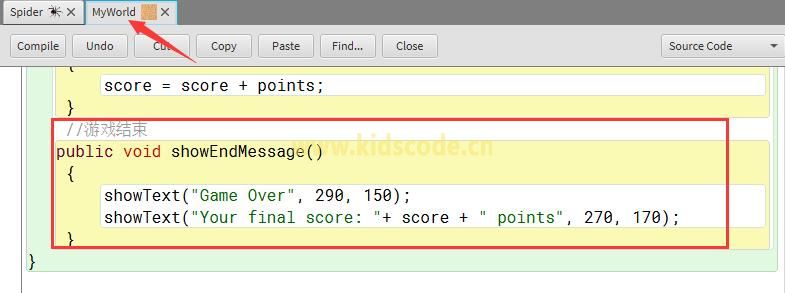

#GREENFOOT SCOREBOARD SOFTWARE#
Introduction to Programming with GreenfootĬompanion Website Additional material and resources for this book can be found at For students: G The Greenfoot software G The scenarios discussed in this book G The Greenfoot Gallery-a scenario showcase G Tutorial videos G A discussion forum G Technical support For teachers: G A teacher discussion forum G Additional exercises related to the book G The “Green Room” containing worksheets and other teaching resources I2.2 Programming your Greeps.Ĩ.3 Sound recording and editing.Ĩ.4 Sound file formats and file sizes.Ĩ.6 Image files and file formats.Ĩ.8 Combining images files and dynamic drawing. I1.4 Publishing on the Greenfoot Gallery.Ĭhapter 5 Making music: An on-screen piano.ĥ.3 Abstraction: Creating multiple keys.ĥ.5 Using loops: The while loop.ĥ.7 Summary of programming techniques.Ĭhapter 6 Interacting objects: Newton’s Lab.Ħ.1 The starting point: Newton’s Lab.Ħ.2 Helper classes: SmoothMover and Vector.Ħ.3 The existing Body class.Ħ.4 First extension: Creating movement.Ħ.5 Using Java library classes.Ħ.6 Adding gravitational force.Ħ.12 Summary of programming techniques.Ĭhapter 7 Collision detection: Asteroids.ħ.1 Investigation: What is there?.ħ.5 Colliding with asteroids.ħ.9 Interacting with objects in range.ħ.11 Summary of programming techniques. List of scenarios discussed in this book.ġ.3 Interacting with objects.ġ.8 Understanding the class diagram.Ģ.1 The Little Crab scenario.Ģ.4 Dealing with screen edges.Ģ.5 Summary of programming techniques.ģ.9 Summary of programming techniques.Ĥ.1 Adding objects automatically.Ĥ.5 Instance variables (fields).Ĥ.7 Using actor constructors.Ĥ.12 Summary of programming techniques. prevent ball from going through walls by changing its velocity prevent paddles from going through wallsĬontext. check for collision between two objects using axis-aligned bounding box (AABB)Ĭontext. ball velocity (start going to the top-right corner) keep track of when need to reset the ball position start in the middle of the game on the right side start in the middle of the game on the left side getContext ( '2d' ) Ĭonst maxPaddleY = canvas. getElementById ( 'game' ) Ĭonst context = canvas. When you become a Patron, you get access to behind the scenes development logs, the ability to vote on which games I work on next, and early access to the next Basic HTML Game. Other Basic Gamesīasic HTML Games are made possible by users like you. Giving attribution is not required, but appreciated. There's no need to ask permission before using these.
#GREENFOOT SCOREBOARD CODE#
(CC0 1.0 Universal) You're free to use this game and code in any project, personal or commercial.
#GREENFOOT SCOREBOARD SERIES#
This series is meant to give a basic outline of the game but nothing more.

Important note: I will answer questions about the code but will not add more features or answer questions about adding more features. For example, if it hit the topmost part of the paddle it should have a sharp angle upward, whereas if it hit the direct middle of the paddle it should move completely flat towards the other payer.

The ball should change trajectory based on where it hit the paddle.Allow the game to be scaled down to a phone size.Use context.fillText() to display the score to the screen When a ball goes past a paddle, the other player should score a point.This is a basic implementation of the Atari Pong game, but it's missing a few things intentionally and they're left as further exploration for the reader.


 0 kommentar(er)
0 kommentar(er)
